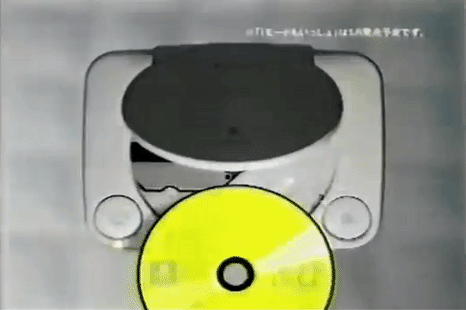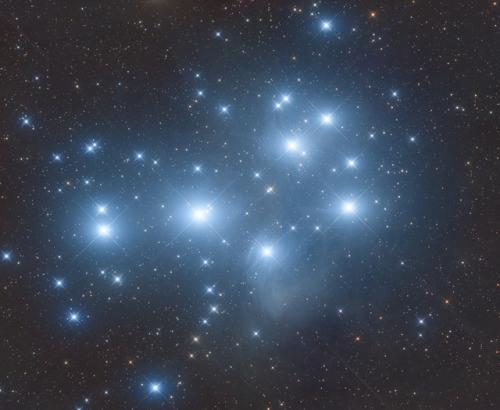Tres-4b-blog - ✰

More Posts from Tres-4b-blog and Others

Aurora Australis : Not fireworks, these intense shimmering lights still danced across Earth’s night skies late last month, seen here above the planet’s geographic south pole. The stunning auroral displays were triggered as a coronal mass ejection blasted from the Sun days earlier impacted the magnetosphere, beginning a widespread geomagnetic storm. The six fisheye panels were recorded with digital camera and battery in a heated box to guard against -90 degree F ambient temperatures of the long winter night. Around the horizon are south pole astronomical observatories, while beyond the Aurora Australis stretch the stars of the southern Milky Way. via NASA
js










SpaceTime 20190503 Series 22 Episode 34 is now out
SpaceTime covers the latest news in astronomy & space sciences.
The show is available as a free twice weekly podcast through Apple Podcasts (itunes), Stitcher, Google Podcast, Pocketcasts, SoundCloud, Bitez.com, YouTube, Audio Boom, your favourite podcast download provider, and from www.spacetimewithstuartgary.com
SpaceTime is also broadcast coast to coast across the United States on Science360 Radio by the National Science Foundation in Washington D.C. and around the world on Tune-In Radio.
SpaceTime daily news blog: http://spacetimewithstuartgary.tumblr.com/ SpaceTime facebook: www.facebook.com/spacetimewithstuartgary SpaceTime Instagram @spacetimewithstuartgary SpaceTime twitter feed @stuartgary SpaceTime YouTube: https://www.youtube.com/c/SpaceTimewithStuartGary
Today’s stories…
First results from ExoMars Trace Gas Orbiter During its first year in orbit the ExoMars Trace Gas Orbiter has made some surprizing discoveries about the impact of the recent global Martian dust storm and an apparent lack of methane in the red planet’s atmosphere.
Dragon spacecraft destroyed in dramatic explosion The first crew Dragon two capsule which successfully flew to the International Space Station in March has been destroyed in a major explosion at the Cape Canaveral air force station in Florida.
Stratolaunch test flight Stratolaunch has successfully undertaken the first test flight of the company’s behemoth twin fuselage six engine jetliner designed to launch satellites into space.
May Skywatch We tour the night skies of May which play host to the annual Eta-Aquarids meteor shower generated by Halley’s Comet.
Last Wednesday’s show…
New model for Nova explosions Scientists will need to go back to the drawing board to come up with new ways in which powerful explosions – known as novae – can occur on the surfaces of white dwarf stars.
Explaining super-luminous novae Astronomers have discovered that shockwaves generated during nova explosions can dramatically amplify their power and brightness.
NASA’s InSight Detects First Likely ‘Quake’ on Mars NASA’s Mars InSight lander has measured and recorded for the first time ever a likely “marsquake.”
New physics needed to explain differences in the Hubble Constant New observations are showing that differences in how fast the universe is expanding now compared to how fast it was expanding billions of years ago are no statistical accident.
The Science Report Climate change is now threatening the world’s doomsday vault. The world’s second largest colony of emperor penguins almost wiped out. Extreme ocean winds and wave heights are increasing around the globe. A small bone behind the knee, which was once rare in humans is becoming more common. Palaeontologists have unearthed a new species of hadrosaur dinosaur in Mongolia. History revisionists spewing lies and cherry-picked half-truths for racist and political propaganda
SpaceTime Background SpaceTime is Australia’s most respected astronomy and space science news program. The show reports on the latest stories and discoveries making news in astronomy, astrophysics, cosmology, planetary science, galactic and stellar evolution, physics, spaceflight, and general science. SpaceTime features interviews with leading Australian scientists about their latest research. The show is broadcast coast to coast across the United States by the National Science Foundation on Science360 Radio and around the world on Tune in Radio. SpaceTime is available in Australia as a twice weekly podcast which averages around three million downloads annually. It’s hosted on line through Bitez.com on all major podcast platforms. SpaceTime began life in 1995 as ‘StarStuff’ on ABC NewsRadio. Stuart Gary created the show while he was NewsRadio’s Science Editor, evening presenter, and news anchor (a position he held for more than 17 years). Gary wrote, produced and hosted StarStuff, consistently achieving 9 percent of the Australian radio audience share - according to Neilsen ratings survey figures for the five major Australian metro markets (Sydney, Melbourne, Brisbane, Adelaide, & Perth). The StarStuff podcast was hosted by ABC Science on line achieving over 1.3 million downloads annually. Sadly, the popular program was axed in 2015 during ABC budget cuts. Rather than remain with the ABC, Gary resigned to continue producing the show independently and rebranding it as SpaceTime. The first episode of SpaceTime was broadcast on February 8th 2016 and the show has been in continuous production ever since. SpaceTime now reaches an audience almost three times greater that it achieved as StarStuff and continues to grow.









The First Galaxies: What We Know And What We Still Need To Learn
“As we look farther back in time, we find that younger galaxies formed stars at faster rates than galaxies do today. We can measure the star-formation rate, and find that at earlier and earlier times, it was more intense. But then we find it hits a peak when the Universe is about two billion years old. Go younger than that, and the rate goes down again.”
We’ve come incredibly far in our quest to learn how the Universe came to be the way it is today. We can see out in space for tens of billions of light years, to galaxies as they were when the Universe was only a few percent of its present age. We can see how galaxies evolve, merge and the stars inside change. And we can see to even before that, when no stars or galaxies existed at all. But how did we get from there to here? There are still plenty of gaps in the story. We’ve never seen the first stars or galaxies; we’ve never witnessed the start of cosmic reionization; we’ve never seen the star formation rate jump from zero to a real, finite number. Yet with James Webb and WFIRST on the horizon, these gaps in our knowledge may – if we’re lucky – all disappear.
Come get the story on what we know about the first galaxies, and what we hope and have left to still learn!
finished a 4 hour html homework now i gotta study math and programming im gonna kms i swear
COMPUTER SCIENCE
The computer has been very useful to us since the very beggining of its time. It helps make work faster and easier. It is a programable machine which receives and stores data to make an output.

The First Programmable Computer
Originally named the Z1 began development in 1936 by Germany’s Konrad Zuse in his parents living room and today is considered the first electrical binary programmable computer. The Z1 had 64-word memory (each word contained 22 bits) and a clock speed of 1Hz. To program the the Z1 required that the user insert punch tape into a punch tape reader and all output was also generated through punch tape.
The First Portable Computer (laptop)
The first truly portable computer or laptop is considered to be the Osborne I, which was released on April 1981. The Osborne I was developed by Adam Osborne and weighed 24 pounds, had a 5-inch display, 64 KB of memory, two 5 1/4” floppy drives, and a modem.
-
 seekerbr liked this · 3 years ago
seekerbr liked this · 3 years ago -
 birddie-boogie liked this · 3 years ago
birddie-boogie liked this · 3 years ago -
 one-mess-of-a-human-being reblogged this · 3 years ago
one-mess-of-a-human-being reblogged this · 3 years ago -
 one-mess-of-a-human-being liked this · 3 years ago
one-mess-of-a-human-being liked this · 3 years ago -
 wazzuppy reblogged this · 3 years ago
wazzuppy reblogged this · 3 years ago -
 wazzuppy liked this · 3 years ago
wazzuppy liked this · 3 years ago -
 twinkodile reblogged this · 3 years ago
twinkodile reblogged this · 3 years ago -
 big-funky-tree reblogged this · 3 years ago
big-funky-tree reblogged this · 3 years ago -
 thatonecheeseguy liked this · 3 years ago
thatonecheeseguy liked this · 3 years ago -
 eternallostboy reblogged this · 3 years ago
eternallostboy reblogged this · 3 years ago -
 eternallostboy liked this · 3 years ago
eternallostboy liked this · 3 years ago -
 missionel liked this · 3 years ago
missionel liked this · 3 years ago -
 robibibi liked this · 3 years ago
robibibi liked this · 3 years ago -
 friendly-neighborhood-dumbass liked this · 4 years ago
friendly-neighborhood-dumbass liked this · 4 years ago -
 cold256 liked this · 4 years ago
cold256 liked this · 4 years ago -
 ahotdognamedhenry liked this · 4 years ago
ahotdognamedhenry liked this · 4 years ago -
 cornmealor liked this · 4 years ago
cornmealor liked this · 4 years ago -
 thedorkyidiot reblogged this · 4 years ago
thedorkyidiot reblogged this · 4 years ago -
 thedorkyidiot liked this · 4 years ago
thedorkyidiot liked this · 4 years ago -
 horny-for-evil liked this · 4 years ago
horny-for-evil liked this · 4 years ago -
 it-me-dragon-gal liked this · 4 years ago
it-me-dragon-gal liked this · 4 years ago -
 squallycakes69 liked this · 4 years ago
squallycakes69 liked this · 4 years ago -
 lazy-flup liked this · 4 years ago
lazy-flup liked this · 4 years ago -
 zicavirus liked this · 4 years ago
zicavirus liked this · 4 years ago -
 alexia-nicolette liked this · 4 years ago
alexia-nicolette liked this · 4 years ago -
 bey-blade-bread liked this · 4 years ago
bey-blade-bread liked this · 4 years ago -
 elias-acorn liked this · 4 years ago
elias-acorn liked this · 4 years ago -
 lacking-hydration liked this · 4 years ago
lacking-hydration liked this · 4 years ago -
 marshmallow-floof reblogged this · 4 years ago
marshmallow-floof reblogged this · 4 years ago -
 tumblingdownx3 liked this · 4 years ago
tumblingdownx3 liked this · 4 years ago -
 mr-bisk liked this · 4 years ago
mr-bisk liked this · 4 years ago -
 the-cooler-vigilante liked this · 4 years ago
the-cooler-vigilante liked this · 4 years ago -
 dacorrales21 reblogged this · 4 years ago
dacorrales21 reblogged this · 4 years ago -
 akuauli liked this · 4 years ago
akuauli liked this · 4 years ago -
 megafanx2001 liked this · 4 years ago
megafanx2001 liked this · 4 years ago -
 kolasharkattack liked this · 4 years ago
kolasharkattack liked this · 4 years ago -
 twinktodapast reblogged this · 4 years ago
twinktodapast reblogged this · 4 years ago -
 tube-of-dinosaurs liked this · 4 years ago
tube-of-dinosaurs liked this · 4 years ago





